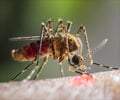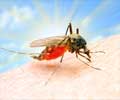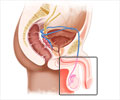Highlights
- Rapid tests for detection of Zika, chikungunya and dengue viruses do not exist, especially in developing countries where the infections are prevalent.
- Current methods for testing involve the use of polymerase chain reaction machines that are complex to use and expensive.
- A new smartphone-based device uses the loop-mediated isothermal amplification (LAMP) diagnostic method for detecting Zika and other viruses and does not require sample processing or heavy-duty power.
The instruments used for these tests are large and it can cost up to $20,000. This makes rapid testing unrealistic for limited-resource clinics in developing countries where the viruses are prevalent.
The key feature of the new device smartphone technology.
"In addition to creating an app that serves as a simple interface to operate the device, we were able to adapt smartphone camera sensors to replace traditional laboratory sample analysis tools, allowing for unprecedented mobility," chemical engineer and lead author Aashish Priye said.
Conventional Testing Methods
The sample is heated and cooled multiple times so that the viral DNA/RNA in the sample is replicated enough to be detected.
Detecting the copied viral material also requires expensive components such as fluorimeters.
The complexity and expense of traditional PCR machines have prevented them from being used in clinics where they are most needed.
Loop-Mediated Isothermal Amplification
The new device is based on the loop-mediated isothermal amplification (LAMP) diagnostic method, that does not require sample processing before testing.
LAMP copies viral DNA/RNA without the heating and cooling cycle, which eliminates the need for a heavy-duty power.
The LAMP box tests a sample that is heated only once to 65 degrees Celsius (150 degrees Fahrenheit) for half an hour, after adding a few carefully designed biochemical agents.
"We've demonstrated that the chemistry we're using can amplify viral RNA directly from raw, unprocessed samples," said Sandia chemical engineer and project lead Robert Meagher. "That is the ideal for a point-of-care testing scenario because you don't want to have extra equipment for isolating DNA or RNA."
To detect multiple viruses simultaneously, the research team previously developed a method to combine LAMP with an additional detection technique.
This other technique, known as quenching of unincorporated amplification signal reporters (QUASR), involves tagging fragments of synthesized viral DNA called primers with fluorophores, molecules that emit bright light signals.
The primers incorporate into the heated and amplified sample DNA. The samples containing viral DNA/RNA to appear bright, while negative reactions remain dark.
New Algorithm
A novel algorithm, has been developed that allows the smartphone sensor to act as a fluorimeter and detects QUASR LAMP light signals if they appear.
The user needs to place the smartphone on top of the LAMP box and open an app. The app turns on the heater to initiate the LAMP reaction.
Once the 30-minute testing period is up, the smartphone photographs the sample. The app then employs a novel image analysis algorithm to accurately determine the color and brightness of the glow emitted from the LAMP reaction.
This smartphone-based image analysis offers much greater detection.
Infections Zika, dengue and chikungunya are spread by the same mosquito type and have similar early symptoms. Zika virus has been linked to severe fetal abnormalities, including microcephaly and congenital blindness, as well as neurological disorders that can strike people at any age.
This prototype diagnostic tool could enable care providers to test quickly for all three at the same time, preventing misdiagnoses.
"There are billions of smartphones in the world, even in developing countries, and this tool doesn't require the highest-end smartphone on the market," Priye said. "It only needs to have an optical sensor and be able to run the app."
The paper titled "A smartphone-based diagnostic platform for rapid detection of Zika, chikungunya and dengue viruses" is published in the journal Scientific Reports.
Reference
- Aashish Priye et al. A smartphone-based diagnostic platform for rapid detection of Zika, chikungunya and dengue viruses. Scientific Reports; (2017) doi:10.1038/srep44778.
Source-Medindia












